#B&C-AAINO
Explore tagged Tumblr posts
Text
Blood and Chocolate: An Adaptation in Name Only
Previously: Section 0 - Introduction
Section 1 – The Book
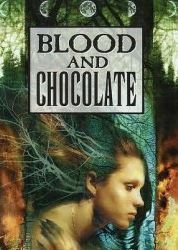
Preface: The 1997 novel Blood and Chocolate is DENSE. The paperback only spans 264 pages, but the story follows the coming of age of a dynamic and flawed female protagonist, encompasses ancient werewolf legends and laws, goes in depth into lycanthropic politics, and also features a love triangle, a teenage soap opera, a forbidden romance, and a goddamned murder mystery.
Summary: Vivian Gandillon is a 15-year-old werewolf. A year after her father was killed in the fire that destroyed their home, Vivian is lost and grieving while her leaderless pack falls apart in the Maryland suburbs that they fled to. Aiden, a tall, gentle human classmate attracts her attention and presents Vivian an escape from the tangled, animalistic world of werewolves. Keeping her lycanthropy secret, Vivian begins to date Aiden, defying the laws of her people. Vivian is pressured to break things off by her mother, her five delinquent age-mates, and the would-be leader, Gabriel. Gabriel, a 24 year-old welder, is attractive, intimidating and the object of intense romantic competition. He, more than any other, tries to convince Vivian that her dalliance with a human is dangerous, eventually revealing that he speaks from painful personal experience. The story twists and turns, tearing Vivian and Aiden apart while pulling Vivian and Gabriel together. In the end, through many trials, Vivian discovers that she can’t escape either her human or her animal nature, and must embrace both.
Themes: Vivian’s central character arc finds her struggling with what she wants as opposed to what she needs. At the opening of the novel, Vivian wants to escape the violent chaos of her pack, with its painful history and uncertain future. She finds that escape in Aiden, with his Beaver Cleaver family, his lovably quirky friends, and his sweetness and simplicity. However, when the time comes to reveal the hidden aspects of her identity, Aiden can’t handle it. Despite his supernatural curiosity, he cannot accept the supernatural when it presents itself to him. His rejection sends Vivian into a tailspin of self-destruction that only ends when she accepts the love that Gabriel is offering, a love that honors all of what she is. To ultimately find happiness, Vivian had to give up what she wanted and embrace what she needed. In addition to this, there is also a great deal of time in the novel spent contrasting the human and the animal sides of Vivian’s nature. Her two suitors Aiden and Gabriel represent, respectively, the human and the animal. Scenes of Vivian socializing with Aiden and his human friends are juxtaposed with scenes of Vivian’s werewolf pack brutally vying for dominance. The very title of the book is a reference to this dichotomy, Blood – representing Vivian’s animal desires, and Chocolate – representing Vivian’s human longings. Throughout the novel, Vivian swings between these two extremes, at one point drinking herself into a heartbroken stupor over Aiden, then blacking out and waking up in her bed next to a severed hand. She tries, in her romance with Aiden, to balance her human and animal sides, but she only achieves that balance with Gabriel, a partner who also exists in the grey area between man and beast.
Highs: These are the aspects of the novel have captivated my imagination and kept this book in my collection for so long.
o Werewolf Society: It’s a damn shame that Klause hasn’t written more stories within this framework, because it is absolutely ripe for exploration and development. The enormous potential here is one of the primary reasons why this book has held my fascination for so long and why I have written so much (published and unpublished) fanfiction for it.
o Flawed Characters: No one who’s read the book will tell you that Vivian is perfect or even likeable 100% of the time, but it fits with her characterization as a grieving, lost teenager and serves to make her all the more like an actual person. Most of the characters are like that, with their good qualities balanced or sometimes overwhelmed by their less savory sides. It makes the fictional world feel richer and more realistic, despite the supernatural elements.
o Consequences: The characters in this novel make real, awful mistakes, and they face lasting consequences for them. One of Vivian’s mistakes – maiming Astrid while defending her mother, directly leads to Vivian’s ex, Rafe, getting sucked into Astrid’s revenge plot, leading to Vivian being framed for murder and the eventual executions of both Rafe and Astrid, during which Vivian is accidentally shot by Aiden.
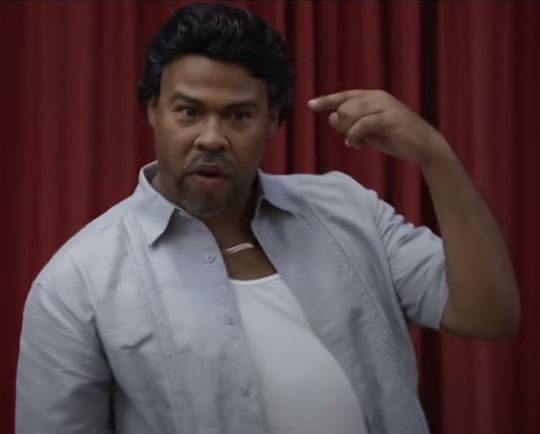
CONSEQUENCES! They make the story more believable, more suspenseful, and this novel, with its cast of flawed characters, would not have worked without them.
o Assertive Female Protagonist: Vivian is refreshingly frank about her desires, which is very noticeable in her courtship with Aiden. Aiden assumes that he has to advance their physical relationship slowly so as to not frighten or offend Vivian, while Vivian urges him on. She doesn’t hesitate when going after what she wants, and she’s not ashamed of her sexuality. It’s a welcome change from the restrictions that western society places on female desire, and I’d like to see more characters like her.
Lows: Blood and Chocolate is far from perfect, but, in my opinion, there are three glaring flaws in this book, and I would be remiss if I didn’t address them.
o The Esme Question: The first point is one that, once seen, cannot be unseen. Vivian’s mother, Esme, is one of the women competing for Gabriel’s affections at the beginning of the novel. It is established that they go on dates (“Saw your mother go into Tooley’s bar with Gabriel last night.” p. 18), but Klause is not explicit about how far their relationship has gone. This ambiguity leaves open a potentially disturbing possibility:
It is canonically possible that Gabriel had a sexual relationship with Esme and then moved on to sexually pursue her daughter, Vivian.
Personally, I can reasonably believe that Gabriel and Esme never progressed beyond idle flirting because:
a. Vivian strikes me as the type of person who would mark her mother’s sexual partners as “off limits”.
b. Up until just past the Ordeal scene, both Esme and Astrid are still fighting over Gabriel, implying that neither of them had really “won” him.
c. The possibility outlined above seems like it would be a bridge too far to be included in a YA novel, especially in the 90′s.
Your mileage may vary. I’ve seen reviews of the book whose negative ratings hinge on the fact that Gabriel dated Esme at all, irrespective of whether their relationship was sexual or not. Honestly? I can’t blame them. If the mere existence of this possibility squicks you out, then it’s likely going to sour the ending and ruin the rest of the book for you.
o The Age Differences: The second point is the least defensible. At the end of the novel, Vivian is 16 and Gabriel is 24. That minor/adult 8 year age gap constitutes a “yikes” in my part of the world. Klause skirts this by establishing that werewolf society has some stark differences with human society, namely that a 16 year old female is considered an adult by werewolf law. This is still a rather uncomfortable detail to be included in an American YA novel, and the older I get, the more uncomfortable it becomes.
In addition to the Vivian/Gabriel age gap, there is the even wider Astrid/Rafe age gap. Rafe is Vivian’s ex and age mate, although there are reasons to assume that he is slightly older than her. This places him somewhere in a probable 16-18 age range. He is canonically younger than 21, which makes him, according to werewolf law, not yet an adult. Astrid has a son who is also Vivian’s age, which places Astrid somewhere in her late 30’s to mid 40’s. In the book, Astrid and Rafe have a sexual relationship.
To be fair to Klause, this is framed in the novel as being toxic and ultimately destructive to both Astrid and Rafe. Near the end of the story, Rafe finally realizes that Astrid has been taking advantage of him, turning Rafe, in my opinion, into a tragic victim of manipulation.
Let me leave this segment with a PSA:
If you’re reading this and you’re underage, please don’t enter into a “relationship” with an adult. The adults in these scenarios in the real world are predators, and they’re preying on your inexperience and naïveté. They know that you probably won’t recognize relationship red flags and they think they can pressure you into doing unsafe and unhealthy things in the name of “love”. Stay safe, kids!
o Sexual Harassment: My third and final low point is one that I have very mixed feelings about. As a result, this is the longest segment of this post, so strap in. In the novel, many of the interactions between Vivian and male characters are inappropriately sexual. The most egregious offenders are the Five, Gabriel, and Aiden’s father. The Five, Vivian’s male werewolf peers, are crass, rude and arrogant. Led by Rafe, they display a lot of entitlement for Vivian’s affections. The most pointed (and gross) of these displays happens on p.41:
“You’re not Princess Wolf now,” Rafe growled behind her. “Wait too long and we’ll take what we want.”
That? Yeah, that’s a direct rape threat! Rafe also goes on to grope Vivian at her birthday party. He’s a peach! Gabriel’s harassment mostly takes the form of unwanted advances. It peaks after the Ordeal, the battle royale where Vivian accidentally wins the right to be Gabriel’s mate. In the aftermath, Gabriel corners Vivian in her kitchen, forces a non-consensual kiss on her and declares his intentions to court her. Aiden’s father is notable in the contrast he provides. Vivian only interacts with him once, when Aiden invites her to a family cookout. During this scene, he repeatedly leers at her, makes suggestive comments and on p. 79:
Vivian could hear the innuendo in Mr. Teague’s voice. It made her skin crawl.
However, if you compare Mr. Teague’s harassment to Gabriel, the Five and others, you’ll find that there is a significant difference in Vivian’s reaction. Vivian isn’t afraid to bite back at the Five’s harassment – scoring vivid revenge for Rafe’s groping when she injures his genitals. She tries to do the same to Gabriel when he forces a kiss on her, but he relents on his own. We see a similar dynamic when Esme snaps at Bucky, another male werewolf, who catcalls her in a bar. This forms a pattern which suggests that forceful sexuality is a feature of werewolf culture. Vivian confirms this the first time that she and Aiden kiss on p. 51:
“He was gentle. She hadn’t expected that. Kisses to her were a tight clutch, teeth, and tongue.”
And this is where my mixed feelings come in. I don’t condone the harassment that Vivian experiences, but I understand why Klause wrote it. Any author writing inhuman characters can’t simply tell us that they are inhuman, they have to show it. The forceful sexuality of the werewolf characters in this book is one way that Klause clearly shows that they are NOT human and serves as a contrast to the human characters. But where does Aiden’s dad fit into this? His harassment is milder than the Five’s or Gabriel’s, but it disgusts Vivian in a way that the other harassment didn’t. Why? Sexual harassment seems to be a constant feature of her pack life. This isn’t even the only time that an older man leers at her – on p. 115, in the same scene where Esme gets catcalled:
Some of those male eyes strayed to Vivian, too, and she preened at the thought of being a threat.
That’s a far cry from the skin-crawling disgust she felt with Mr. Teague, but it’s basically the same offense. What’s different? We find it in a conversation with him on p. 74:
“I would think a girl like you would go out with someone older.” He winked at Vivian. Like someone your age? Vivian thought, repelled by the man’s lack of loyalty to his son.
Vivian’s disgust stems from the fact that the man flirting with her is her boyfriend’s father. She’s shown to welcome sexual attention from other older men, and she has no problems handling more overt harassment, but the paternal disloyalty sickens her. The overt sexual harassment is there, and if it makes it impossible for you to enjoy the book, I don’t blame you. Your feelings are valid, and I’m not going to tell you that you’re wrong. Personally, I understand the authorial reasoning behind its inclusion, and its utility as a characterization tool, so it doesn’t prevent me from enjoying the story. Your mileage may vary.
Verdict: The 1997 novel Blood and Chocolate is flawed, but fascinating. It sets multifaceted characters into a tantalizing world of men and monsters, where the line between good and evil is blurred into nonexistence. It is, despite its problematic elements, my favorite book.
Next: Section 2 - Adaptation Challenges
#blood and chocolate#annette curtis klause#werewolves#loups garous#adaptation#katja von garnier#agnes bruckner#hugh dancy#olivier martinez#B&C-AAINO#cw: rape#cw: age gap
25 notes
·
View notes
Text
Blood and Chocolate: An Adaptation in Name Only
Previously: Section 0 – Introduction, Section 1 – The Book, Section 2 – Adaptation Challenges
Section 3 – The Adaptation
Preface: The 2007 adaptation of Blood and Chocolate directed by Katja von Garnier and written by Ehren Kruger and Christopher Landon did not receive critical acclaim. It stands at 11% on Rotten Tomatoes, and a New York Times review by Jeannette Catsoulis called it “uninvolving and cliché-ridden”. The box office returns were similarly underwhelming, grossing $3.5 million domestically and $6.3 million internationally against a $15 million budget – an $8.7 million loss for a production company used to receiving at least a modest return on investment for other, similar properties.
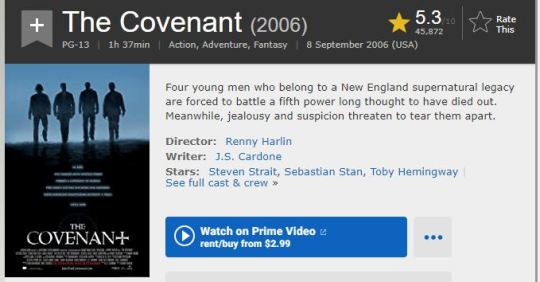
(Ahem.)
But, does it have any merit? It may have failed by the metrics of profitability and critical response, but that does not mean that the film was an entirely, or even partially, failed endeavor.
Summary: Following a surprisingly faithful Romeo and Juliet plot, the movie Blood and Chocolate centers on Vivian, the werewolf Juliet, an orphan living in Bucharest with her Aunt Astrid, who serves as a rough Nurse analogue. They are ruled by Gabriel, the Paris, a tyrannical pack leader with romantic designs on Vivian. The human Romeo, Aiden, is a wandering American artist who encounters Vivian anonymously in an empty church, whereupon he becomes determined to find and court her. Meanwhile, tensions are rising with the Tybalt character, Vivian’s cousin Rafe. He discovers Vivian and Aiden’s romance, threatens Aiden, and is eventually killed by Aiden in self-defense.
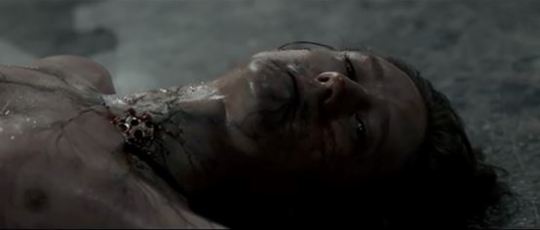
Eventually, Vivian gets poisoned and she and Aiden attempt to escape the city. She is captured and locked up in Gabriel’s headquarters, where Aiden arrives and rescues her. In the process, Vivian kills Gabriel. Afterward, they escape, steal Gabriel’s car, and drive off into the sunset.
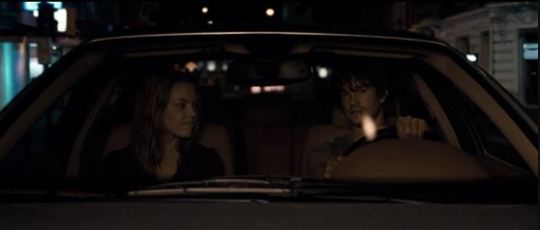
Also, there’s a prophecy about Vivian? More on that later.
Themes: The themes of the movie deviate sharply from the themes of the book. No longer does Vivian struggle with what she wants as opposed to what she needs, because the movie removes any such opposition. In the movie, as in the book, Vivian wants to be with Aiden, but the movie rearranges the rest of the plot and the characters so that what she no longer needs to accept (and find a partner who also accepts) her dual nature as a werewolf to find happiness and fulfillment. Instead, what the film version of Vivian needs is to get away from her creepy, possessive pack leader and forge her own destiny. This “need” no longer stands in opposition to her “want”. On the contrary, the two share a resolution – run away from Bucharest with Aiden. The tension between the human and the animal sides of Vivian’s nature is also reworked. In the book, she can’t pretend to be human, but she also can’t lose control and give in to her animal side. She needs to balance both. The movie, on the other hand, has Vivian definitively choose her human side by choosing Aiden. Actually, no, it’s not just that she chooses her human side – the movie shows her actively rejecting her werewolf side throughout the movie. And, well, given the way that werewolf society is treating her, I can’t really blame her. I wouldn’t fight to stay with these people either. They were ready to pair her off with a man old enough to be her father without her consent.
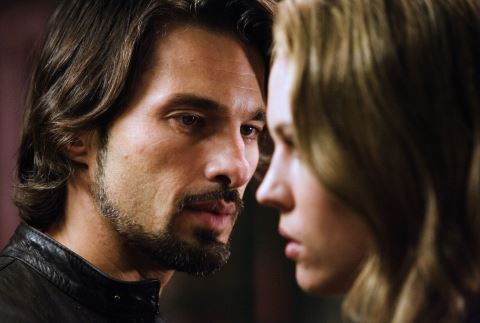
Honestly, I wasn’t really wondering why she wanted to leave with Aiden, but more wondering why she hadn’t left already.
This leads into the theme that was added for the movie: destiny vs. choice. As a girl from “the line of Kings,” Vivian is destined by a nebulous prophecy to lead the Bucharest pack into the Age of Hope. Who prophesied this? If she’s from the line of Kings, why is Gabriel leading the pack? Does Vivian even fulfill this prophecy? We never really find out.
Don’t get me wrong, I’m a sucker for a prophecy storyline. It just – it has to matter. And the prophecy in this movie does not matter. You could cut every mention of it, and nothing substantial would change. One of the biggest mysteries about this movie is why the screenwriters added a prophecy element if they weren’t going to bother to pay it off.
She is also destined (either by the prophecy or because Gabriel says so) to be Gabriel’s next mate, continuing the tradition of the pack leader choosing a new mate every 7 years. Vivian does not appear to have a choice in the matter.
Throughout the movie, Vivian feels chained by this destiny, leading her to keep Aiden at a distance and warning him away from her. Aiden, however, ignores her boundaries and her clear wish to be left alone. He tells her that she needs to ignore her family’s plans for her and make her own choices, mostly because he’s hoping that she’ll chose to date him. In the end, Vivian accepts Aiden’s outlook, choosing to defy Gabriel’s wishes by saving Aiden and escaping Bucharest with him.
Highs: There are two major elements that I like about this movie, and I do honestly like them. I’ve watched this movie a lot, and, no, it’s not just hatewatching. I genuinely enjoy this movie.
o The Cast: I really like Agnes Bruckner. She was great in the slasher movie, Venom, and I think she made an admirable Vivian. Despite some of the cheesier lines, she turns in a decent performance. I believed that she felt guilty about her family’s deaths. I believed that she felt torn between her attraction to Aiden and her duty to her pack. I even believed that moment in the ending where Vivian can’t bring herself to kill Gabriel, despite the threat that he represents.
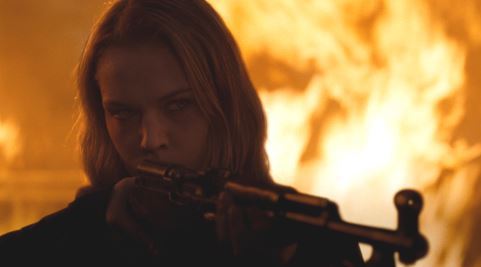
Of course, the script ruins that seconds later when she just… shoots him anyway? Also, and this is a violently American thing to say, but did they have to use the wimpiest sounding gun possible?
I think that Hugh Dancy as Aiden was the standout performance of the movie. He portrayed Aiden as playful, sweet, and resourceful, and his switch from sensitive artist to unlikely badass is nicely set up with his story about defending himself against his abusive father. I also think that he and Bruckner have some decent chemistry. Say what you will about the romantic fountain montage - they look like they’re genuinely enjoying each other’s company.

Also, he spends the last half of the movie bruised and slightly bloody, and I don’t mind that at all.
As for the rest of the cast, I think they gave fine performances despite the material that they had to work with. When movies fail, there seems to be an impulse to blame the cast and rip their performances apart – but I won’t. I don’t blame the cast for the commercial and critical failure of this movie – I blame the people who had actual creative control (the producers, director, screenwriters, etc.).
o The Concept: An ancient dynasty of werewolf leaders extending from primeval Europe into the modern day? Yes fuckin’ please! This is exactly the kind of canon expansion that I was craving from the book! And, okay, yeah. The book’s version of werewolf society is very different from the movie’s version. In the book, werewolf packs are moderately sized clusters of families and individuals ruled by an alpha pair. Other werewolf packs exist, but there doesn’t seem to be any person or group governing werewolf society as a whole. This would seem to directly contradict the movie’s take on werewolf society, but it doesn’t have to. The book’s werewolves originated in western Europe, and from there emigrated to the US in the 1600’s. The movie’s werewolves originated in eastern Europe and stayed there. There’s no reason why those two groups of werewolves couldn’t have started with or evolved two different social structures leading up to the present day. In fact, if you can ignore the shared titles and character names, the movie Blood and Chocolate can be viewed as a new story set in the fictional universe established by the book Blood and Chocolate. And that’s how I choose to view this– it lets me get past my nerd rage and enjoy the movie for what it is.
Lows: While I do honestly enjoy this movie, I would be lying if pretended that it was flawless. Blood and Chocolate didn’t get its reputation by accident. Here are my thoughts on some of the more egregious missteps. o The Script: Okay guys, we need to talk. I’ve seen people defending this movie, saying that it’s an unfairly maligned gem, and I CAN’T. Guys, the dialogue. Have you LISTENED to the dialogue?
Aiden, pleading: “I’ll take the train, I swear it. I’m gone. I’m on that train.”
Rafe: “I AM THE TRAIN!”
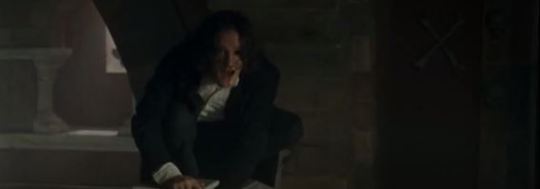
(Boy, WHY are you crouching on the railing like a heterochromatic gremlin?)
Like I said in the last section, I don’t blame the actors for the movie’s failure. I don’t. They had no control over this shit. I do, however, blame the screenwriters; all SIX of them. This film had SIX separate people working on the script and was still released with Hugh Dancy shouting, “If you cared a goddamn thing about me, you would have left me before we ever met!”
This is astonishing for its misunderstanding of linear time if for nothing else.
Seriously, though – Hugh Dancy, cinnamon roll and internet darling, cannot make these lines sound good. When even the best actor in your movie can’t make it work, you know that the script is baaaaad.
o The Wolves: Remember the bit about practical effects vs. CGI in the previous post? Yeah, the filmmakers went hard on the CGI. It made sense given the relatively small budget to go the CGI route as a money saving maneuver. However, the director, Katja von Garnier, decided to use the CGI in the most ridiculous way possible.
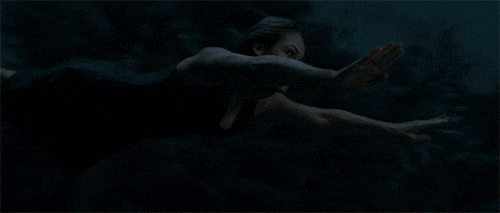
(🎶 FIGHTING EVIL BY MOONLIGHT! 🎶)
The werewolves jump into the air, turn into an ethereal glow, and emerge as wolves. While this is not an inherently bad idea (it’s different, and it could, in theory, look cool), the execution was a huge misfire. Seeing the actors leap forward into a sparkly, pastel shimmer was never anything but ridiculous, and the Sailor Moon aesthetic of it just did not fit with the grungy, realistic look of the rest of the movie.

(Hey, cinematographer: if you want these transformations to fit with the rest of the movie, maybe make the movie LESS F*ING BROWN?) Additionally, the transformed werewolves were simply real wolves. Listening to Katja von Garnier’s commentary, you come away with the impression that she is suuuuuper proud of getting the cast and crew to work with live animals. However, the wolves that they used are a bit on the smaller side.
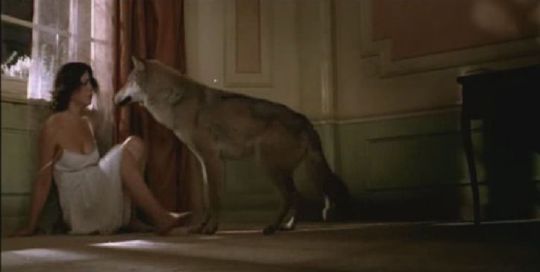
As a result, they didn’t really inspire much fear. For example; in the scene where Rafe murders the girl he’s been stalking, you see both the girl and the wolf in the same shot, and it absolutely kills the tension. Like, girl - roll up a newspaper and boop him on the nose.
o Rafe: The screenwriters desperately wanted Rafe to be menacing, and bless Bryan Dick for trying, but it does not work at all. Rafe in the movie is petulant, sleazy, definitely an asshole, and explicitly a murderer, but I never believed him as a threat. In the confrontation at the chapel, Hugh Dancy stands half a head taller than Bryan Dick, and while neither of them are exactly musclebound, it’s pretty obvious who would win in a fight. For me to buy Rafe as a legitimate danger, he needed to be less foppish, more unhinged, and just physically bigger.

(FFS, Vivian is taller than he is! How is he supposed to be intimidating?)
o Gabriel: I don’t know who decided to turn the romantic lead of the book into the jealous villain of the movie, but they need to be slapped across the face with a trout. It’s been over a decade since the movie came out, and I have learned to shrug off most of the bizarre adaptational choices, but this one still just pisses me off. The evisceration of Gabriel’s character is the biggest betrayal of the source material.
In the book, Gabriel was a foil to Aiden, and Vivian choosing Gabriel symbolized her acceptance of her dual nature. It meant that she wouldn’t have to compromise her identity to be accepted and loved. The adaptation could have provided an opportunity to rework Gabriel’s character arc. It could have cleaned up the age-gap ickiness, removed the non-consensual kiss, nixed the prior relationship with Vivian’s mother and generally made Gabriel as a love interest more palatable for movie audiences. But, whatever. The filmmakers already threw out the core of the human vs. animal theme from the book, so why not just utterly warp Gabriel while they’re at it? Plus, the clueless human love interest vs. the lecherous supernatural stalker dynamic worked for Underworld, so it’s going to work here, right?
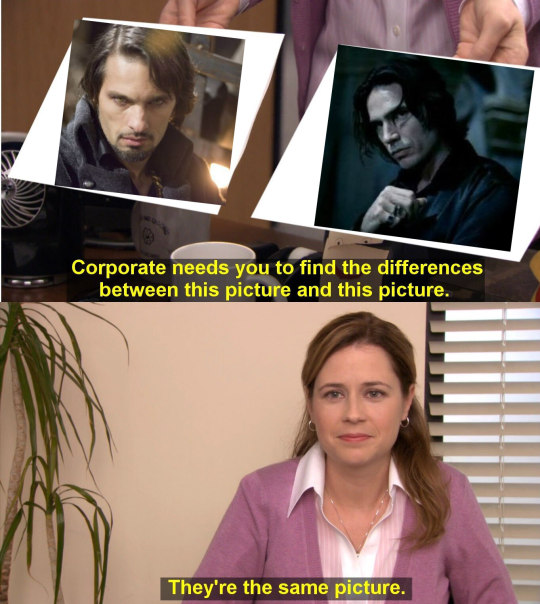
The Stuff I’m Choosing Not to Nitpick (in depth): I just- I don’t know, man. I used to get really worked up about this stuff, but I don’t really feel like devoting any real analysis to these points. Take these potshots and do with them what you will.
o The Parkour: Time has not been kind to parkour. The filmmakers gambled on it being cool for the long haul, and they lost that wager. I get that it takes a lot of skill, and I get what the filmmakers were trying to do with it, but it just looks silly. o The Hunt: I mean, it directly violates the most important werewolf law from the source material, but I’m willing to believe that this ancient werewolf faction in Romania came up with a sanctioned way to hunt humans, so I can forgive this. o The Eye Thing: The early-mid aughts were really impressed with the power and symbolism of colored contacts, weren’t they?
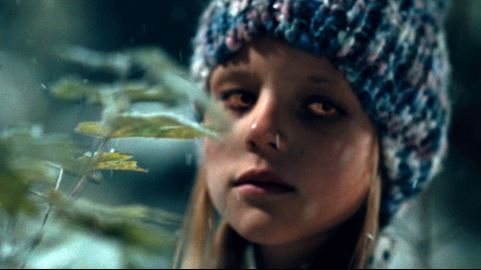
o Astrid: They mashed Astrid and Esme’s characters together and called the resulting chimera Vivian’s aunt. I don’t hate this change as much as I used to. I mostly just wonder why they bothered. The movie had already changed the book’s storyline so much that neither Astrid nor Esme were necessary for the new plot. They could have cut this character out entirely and no one would have missed her.
o The White Wolf: Of course the main character turns into the only white wolf in the movie. ‘Cuz symbolism!
o The (implied) Sex Scene: Sure, she’s dying of silver poisoning, you’re both hiding in a decrepit film warehouse and the werewolf mafia is hunting you, but GO AHEAD. This is the ideal time AND place to bone!

(This woman is clearly DTF.)
Verdict: I want to be really clear on this point – I love this movie. I mean, let me remind you of my cinematic tastes.
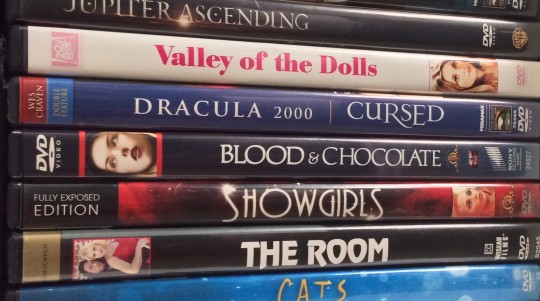
Here’s the thing - there is a difference between movies that are “good” and movies that are “enjoyable”. Blood and Chocolate is not a “good” movie. The plot is formulaic as hell, the dialogue is laughably inept, and any actual potential it had to do something new and innovative with the werewolf genre was squandered. Seriously – one of the remarkable things about the book was how it centered a monster story on the monsters and made them sympathetic. The movie? Turns the monsters back into one-dimensional bad guys. But, hey, at least they made the transformations maaaaaaagical! That said, Blood and Chocolate is absolutely an “enjoyable” movie. I have watched this thing dozens of times since it came out, and each time I find something new to amuse me. The dialogue is hilarious, the special effects miss the mark so badly, and every time you find a new plot hole, an angel gets its wings. What’s more, it contains enough genuinely good elements to balance out the bad. It is a delightful example of low camp, and a worthy addition to any “so bad it’s good” film collection.
I’m not alone in that assessment, either. If you look at amateur reviews of the movie, you’ll find a lot of people defending it despite its flaws. It has an audience!
So, why didn’t it make more money?
Next Week: Section 4 – The Autopsy
#blood and chocolate#annette curtis klause#werewolves#katja von garnier#agnes bruckner#hugh dancy#olivier martinez#B&C-AAINO
18 notes
·
View notes
Text
Blood and Chocolate: An Adaptation in Name Only
Previously: Section 0 – Introduction, Section 1 – The Book
Section 2 – Adaptation Challenges
Preface: I’m writing this section in the aftermath of the Artemis Fowl movie.
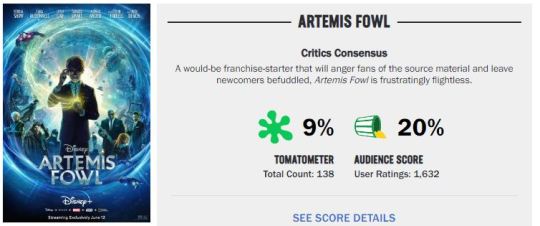
(Yikes? Definitely yikes.)
Most of the professional reviews mention the lack of originality, the ineptitude, and the stink of franchise aspirations. However, if you take a look at the audience reviews, you’ll notice a trend: lots of fans of the book are absolutely livid about the adaptation changes.



To the fans of the books, I am so sorry, and I feel your pain because I’ve been there.
An adaptation with only superficial connections to the source material?
An adaptation that almost seems like a deliberate insult to the book?
An adaptation that legendarily misses the point of the original?
I know that rage because I’ve been through it. Blood and Chocolate fans know the pain that Artemis Fowl fans are currently experiencing.
But, why? Why have so many beloved books been butchered in the name of film adaptation? Let’s take a look at the process that took the 1997 Blood and Chocolate novel and turned it into the 2007 Blood and Chocolate movie.
Adaptation History: After its 1997 publication, Blood and Chocolate enjoyed some popularity and acclaim. Unlike later YA behemoths like Twilight, The Hunger Games and Divergent, Blood and Chocolate doesn’t seem to have made an appearance on the New York Times Bestseller’s List, so it’s difficult to quantify exactly how much popularity it enjoyed. Later that same year, MGM optioned the film rights, indicating that, at some point in the future, we could expect an adaptation. No news was heard on that front until 2004, when a screenplay appeared. The US Copyright Office records the document as, “Blood and chocolate; motion picture project & screenplay / Screenplay written by Christopher Landon, with revisions by Jon Harmon Feldman, Leslie Libman and Larry Williams, Christopher Landon and Jeff King, with current revisions by Ehren Kruger.” That’s one original script and six writers working on revisions – none of whom are the original author, Annette Curtis Klause. According to a 2006-ish interview with Cynthia Leitich Smith. Klause was completely out of the loop when it came to the production, stating, “…I’m afraid that if you aren’t Anne Rice, J.K. Rowling, or Stephen King you don’t get much say in what the film companies do. The producers don’t even keep me up to date–I find my information on the Web.”
Book Challenges: Before we go any further, we need to acknowledge that any adaptation of Blood and Chocolate faced some necessary changes. The story, as written, was never going to pass from book to movie unscathed. Some of the major problems were:
o The Esme Question: Esme’s relationship with Gabriel would be one of the first things on the chopping block. It was a minor detail in the book, it didn’t really impact the overall plot, and it honestly shouldn’t have been included at all.
o The Age Differences: No studio targeting a mainstream US audience is going to tell a love story between a 16-year-old girl and a 24-year-old man. Filmmakers would need to adjust the age dynamics in the story, and they would probably choose to age the younger characters up. This would enable them to skirt the complicated legalities of hiring underage actors and avoid Dawson Casting significantly older actors to play teenagers.
o The Large Cast: The novel has a large number of named characters contributing to the plot in various ways. An adaptation that keeps all of these characters would need to spend time establishing who they are and making them distinct from the other characters. For reference, a list of the named characters includes: Vivian, Gabriel, Aiden, Astrid, Rafe, Esme, Rudy, Ivan, Lucien, Tomas, Bucky, Jean, Persia, Orlando, Finn, Gregory, Willem, Ulf, Quince, Kelly, Bingo, Jem, and Skull. Including these characters and setting them up in a way that is memorable for an audience would take a LOT of screentime. Cuts were necessary. Roles would have to be condensed and some characters would need to be excised entirely.
o The Rating: A strictly faithful adaptation of the novel would contain: Male and female nudity, explicit language, violence, gore, substance abuse, and sexual situations. This would likely have earned the film an “R” rating. For those unfamiliar with the MPAA ratings, an “R”, or “Restricted” rating restricts the audience of the film so that those under 17 are required to have an accompanying parent or adult guardian to be allowed to see the film in theaters. For a film based on a YA novel, an R rating would basically be the kiss of death – it would kill the film’s money making potential. Filmmakers would realistically have to edit the content of the source material to ensure a much more accessible – and profitable – PG-13 rating.
Film Challenges: In addition to the challenges inherited from the source material, translating the story from book to film creates a number of extra difficulties.
o The Budget: Blood and Chocolate didn’t spawn the enthusiastic fanbase that Harry Potter or Twilight did, meaning that there was less of a “guaranteed” audience for the film. The decade-long gap between publication and adaptation probably didn’t help matters, either. As a result, an adaptation would entail a certain amount of risk. Would the film have enough appeal to get non-fans into the theater? What if they spent millions and millions of dollars on a film that only book fans wanted to see? With no assurances of success, the adaptation’s budget would have to be restricted to what the producers considered an acceptable loss – what were they willing to lose if the film flopped?
o The Special Effects: In the novel, Klause goes into vivid detail while describing the bone-crunching, sinew-snapping transformations that take characters from human to wolf. An adaptation, as a werewolf movie, would be expected to follow genre conventions and include these transformations on screen. However, this rubs up against the first point as including such transformations often comes at great costs. They had two options: practical effects or computer-generated imagery (CGI). Rendering the transformations with practical effects would follow in the footsteps of genre classics like An American Werewolf in London and The Howling, but it could necessitate months of behind the scenes preparation and hours of painstaking makeup application.
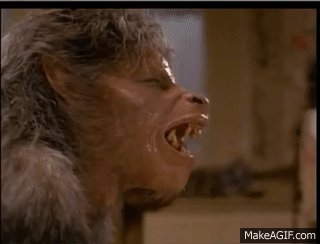
(This? This won the first Oscar for Best Makeup ever .)
CGI would be cheaper, but less satisfying for traditional horror fans (an audience the filmmakers would probably want to appeal to).
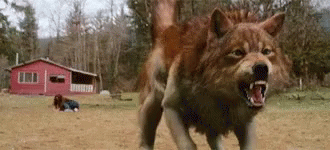
(This was... less acclaimed.)
Studio Considerations: Let’s take a minute and talk about Lakeshore Entertainment.

o Underworld, released in September 2003 by production company Lakeshore Entertainment, was a thriller featuring supernatural creatures, a forbidden romance, secret societies, and a muted color palette. The story was ostensibly an original creation (although the role-playing game company White Wolf alleged otherwise). It grossed $95.7 million worldwide against a $22 million budget and spawned a franchise that is currently in its 6th installment.
o Underworld: Evolution, released in January 2006 by production company Lakeshore Entertainment, followed its predecessor and was a thriller featuring supernatural creatures, a forbidden romance, secret societies, and a muted color palette. It grossed $111 million worldwide against a $50 million budget.
o The Covenant, released in September 2006 by production company Lakeshore Entertainment, was a thriller featuring supernatural creatures, a forbidden romance, a secret society, and a muted color palette. The story was an original creation. It grossed $37.6 million worldwide against a $20 million budget.
o Blood and Chocolate, released in January 2007 by production company Lakeshore Entertainment, was a thriller featuring supernatural creatures, a forbidden romance, a secret society, and a muted color palette. The story was adapted from a popular YA novel. It grossed $6.3 million worldwide against a $15 million budget – an $8.7 million loss. Now, let’s be clear: Blood and Chocolate started filming before the numbers for its sister productions were in. I don’t think that the diminishing returns seen by Underworld: Evolution and The Covenant affected the budget for Blood and Chocolate – its smaller budget is likely attributable to the more restrained story. After all, Blood and Chocolate doesn’t feature a Mustang de-and re-materializing.
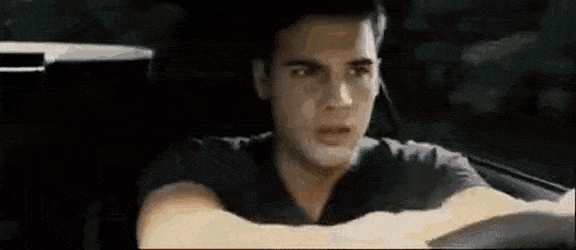
It is a comparatively low key movie.
So why did it fail? We’re going to get elbow-deep into that autopsy, but before we do, we need to take a look at the movie itself.
Next: Section 3 – The Adaptation
#blood and chocolate#annette curtis klause#werewolves#adaptations#katja von garnier#agnes bruckner#hugh dancy#olivier martinez#B&C-AAINO
3 notes
·
View notes
Text
Blood and Chocolate: An Adaptation in Name Only
Section 0 - Introduction
Preamble: In 2007, a supernatural romance thriller based on a young adult novel was released to theaters. It was a Romeo and Juliet inspired story revolving around the forbidden love between a human and a misunderstood monster and the dangers they face.
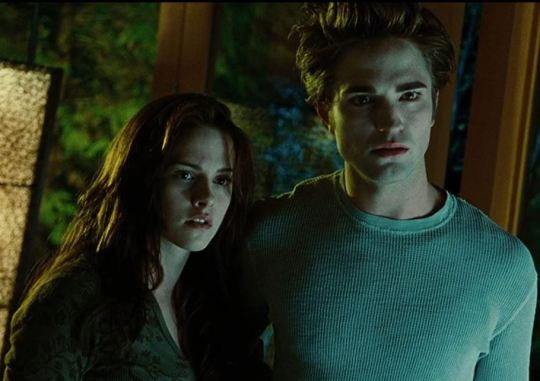
No, it wasn’t Twilight. That came out in 2008. It was Blood and Chocolate.
Despite the apparent similarities between the two films, the differences are more interesting. Twilight, adapted from an incredibly popular book went on to become a huge box office success and inescapable cultural phenomenon.
Blood and Chocolate did not. It was a critical and commercial failure, and even fans of the book hated it. In fact, though it has been mostly forgotten in the wake of Twilight and its imitators, its one major legacy is as a legendarily bad adaptation. But why? Is that fair? Does the movie still have merits despite this? In the following series of posts, I am going to be exploring these questions.
Bona Fides: You might be wondering why I feel like I can speak with any sort of authority on this subject. Well, I have a history with this book and movie. I first read the book in late middle school and was immediately obsessed. And, yes, I mean obsessed; I have had an unhealthy fascination with this novel since I picked it up from my local library. Years later, I now own two copies of the book, one of which has been read to shreds.

Additionally, I have been writing fanfiction for the Blood and Chocolate fandom for over 10 years now at an embarrassingly slow pace. (Seriously, my current WIP, Lucky, has been unfinished for waaaaay too long, and I desperately need to get off my ass and upload the next chapter already). As a result, I basically know the text backward and forward. I know Vivian’s zodiac sign, I can make convincing arguments about the “real” locations of Riverview and Gaskill State Park, and I will defend my many headcanons to anyone who wants to hear them (Spoiler alert: Nobody wants to hear them. The fandom is dying, if not dead). When the adaptation was announced, I remember scouring news articles and forums for all the information I could find. I speculated with other fans about casting choices and the adaptation changes. I wasn’t naïve on that last point – making the book into a movie would absolutely necessitate some major story and character changes. But I had faith. And then more details came out. We found out about the location change, the new plot, the casting choices.
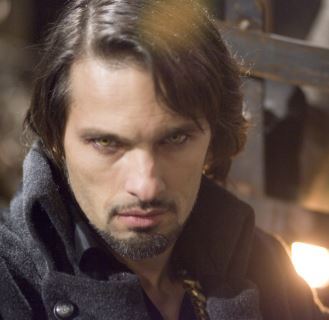
(Olivier Martinez playing a 24-year-old welder? Yeah. Sure.)
But I had hope! And then the trailer came out. In a way, it was a good thing. For one, it introduced me to Within Temptation, still one of my favorite bands of all time. For another, it allowed me to mourn the adaptation that I had hoped for, and prepared me for the movie we were going to get. There’s a prophecy now? Glowy transformations? Tradition dictates swapping out wives every 7 years? And then the title “Blood and Chocolate” plopped onto the screen like a warm turd. I’m not stupid – I know that the title is a hard sell. I know that it looks ridiculous at first glance, and Annette Curtis Klause spends almost the entire novel justifying that title choice. The trailer? Doesn’t even try. So, I was ready. I was aware going in that the movie was not going to be like the book in more than a superficial sense. Still, I had to see it. I took a friend with me to the theater, knowing that I would need moral support to get through it. And then it started. And as it dragged on, I sank deeper and deeper into my seat, embarrassed that this, THIS was the movie I was watching. I had spent money to be in that theater. I would have to be seen leaving it. People would know that I had been there. Despite the mortifying ordeal of having watched Blood and Chocolate, I recognized that there were enjoyable parts. I even went on to buy the DVD – it sits on a shelf with its sister camp-fests The Room, Showgirls, Valley of the Dolls and, now, Cats.
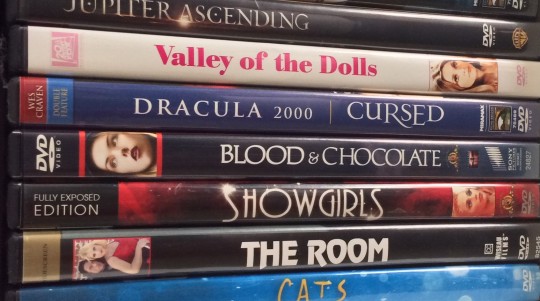
Precipitating Event: Last week, I rewatched the adaptation for the first time in several years and came to a realization: I have mellowed since 2007. The healing effects of time have allowed me to genuinely appreciate parts of the movie that used to piss me off to no end. In fact, with this distance from the embarrassment of that theater showing, I might be able to fairly critique it. And really, if I don’t do it, who will? Nobody, aside from Hugh Dancy stans, seem to care about this movie. Well, Hugh Dancy stans and me.

(He’s adorable! Please don’t come for me!)
Goals: My aims for this project are as follows: I wish to express my thoughts about the original book, the real adaptation challenges, and the adaptation itself. For who? I don’t know. As time passes, it feels like the fandom is moving on, and I’m the one stubborn asshole squatting in the ruins. So, come along if you’re interested in me shouting at clouds. This is: Blood and Chocolate – An Adaptation in Name Only
Next: Section 1 - The Book
#blood and chocolate#annette curtis klause#werewolves#loups garous#adaptation#katja von garnier#agnes bruckner#hugh dancy#olivier martinez#B&C - AAINO
5 notes
·
View notes